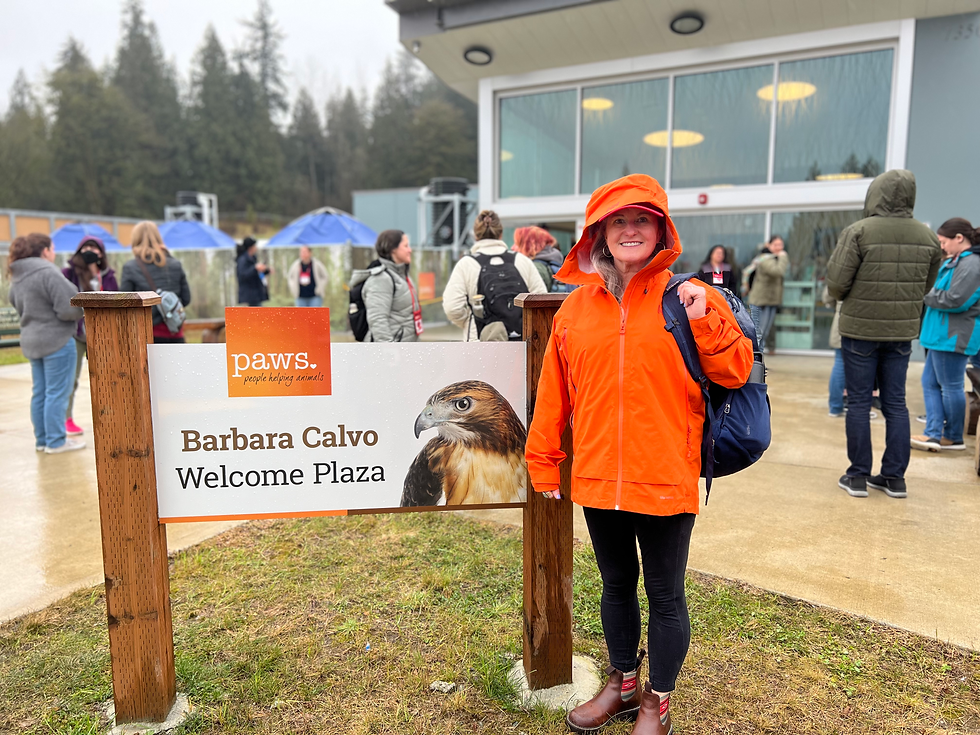The Importance of Continuing Education for Wildlife Rehabilitators
- Jody Giddings
- Mar 3
- 3 min read

Wildlife rehabilitation is a field that constantly evolves with new research, techniques, and challenges. For those dedicated to rescuing and rehabilitating injured, sick, or orphaned wildlife, staying current with the latest developments is not just beneficial—it's essential. The National Wildlife Rehabilitators Symposium provides a crucial platform for this ongoing education, offering rehabilitators the opportunity to expand their knowledge, refine their skills, and connect with colleagues. I attended the 2025 Symposium in Bellingham, Washington in February and it was an incredible learning experience. PAWS Wildlife Rehabilitation Center was the host and we visited their new wildlife clinic. It is an amazing facility and truly state of the art. I walked away with many new ideas and am returning to Utah with new enthusiasm and knowledge. Here are some of the most important reasons for attending this NWRA Symposium...
Accessing Cutting-Edge Scientific Research
The symposium serves as a central hub where the latest scientific research on wildlife care is presented and discussed. Researchers and experienced rehabilitators share findings on nutrition, medication protocols, housing designs, and treatment methods that can significantly improve animal outcomes. This direct access to current research allows rehabilitators to:
Learn about newly discovered diseases and treatment options
Understand emerging wildlife health threats in different regions
Discover more effective rehabilitation techniques based on evidence-based studies
Apply species-specific care advances that increase release rates
By incorporating this knowledge into their practice, rehabilitators can provide more effective care, potentially saving more lives and increasing successful releases back to the wild.
Staying Ahead of Emerging Diseases
Disease management is a critical component of wildlife rehabilitation. The symposium offers sessions specifically focused on:
New and emerging wildlife diseases
Zoonotic disease concerns and safety protocols
Regional disease outbreaks and containment strategies
Advanced diagnostic techniques and testing procedures
As climate change and habitat loss continue to impact wildlife populations, new diseases emerge and existing ones spread to new areas. Understanding these patterns is crucial for effective treatment and for protecting both wildlife and human health. The symposium's focus on disease education helps rehabilitators identify, treat, and prevent the spread of diseases in the animals under their care.
Networking and Community Building
Perhaps one of the most valuable aspects of the symposium is the opportunity to connect with fellow rehabilitators from across the country. These connections allow for:
Sharing of practical tips and techniques that may not be published in formal research
Building support networks for particularly challenging cases
Collaborating on regional issues affecting wildlife
Mentoring relationships between experienced and newer rehabilitators
These professional relationships often last long after the symposium ends, creating a community of support that rehabilitators can turn to throughout the year when faced with difficult cases. Best Friends Wildlife Refuge from Kanab was also at the conference. We have worked with them before but hope to expand our relationship going forward. It was wonderful to have another Utah Wildlife Rehabilitation Center in attendance.
Regulatory Updates and Compliance
Wildlife rehabilitation is governed by various federal, state, and local regulations that can change frequently. The symposium often includes sessions on:
Updates to permitting requirements
Changes in wildlife laws and regulations
Best practices for compliance documentation
Ethical considerations in wildlife rehabilitation
Staying informed about these regulatory changes is essential for operating legally and ethically within the field.
Renewal and Inspiration
Wildlife rehabilitation can be emotionally and physically demanding work. The symposium provides not just education but also:
Recognition of achievements in the field
Shared celebration of successful releases and conservation impacts
Renewed sense of purpose and community
Inspiration from leaders in the field
This renewal is vital for preventing burnout and maintaining the passion that drives wildlife rehabilitators to continue their important work.
Conclusion
For me, the National Wildlife Rehabilitators Symposium represents far more than just a professional development opportunity—it's an essential component of providing the highest standard of care for wildlife. By staying current with scientific research, disease management protocols, regulatory requirements, and best practices, rehabilitators can continuously improve their skills and knowledge. In a field where lives literally hang in the balance, this commitment to ongoing education translates directly to better outcomes for the animals in their care and, ultimately, healthier wildlife populations returning to their natural habitats. The visit to the PAWS Wildlife Rehabilitation Center gave me some wonderful insights into how to construct a new state of the art center, our goal at Wasatch Wildlife Conservation Center.




Comments